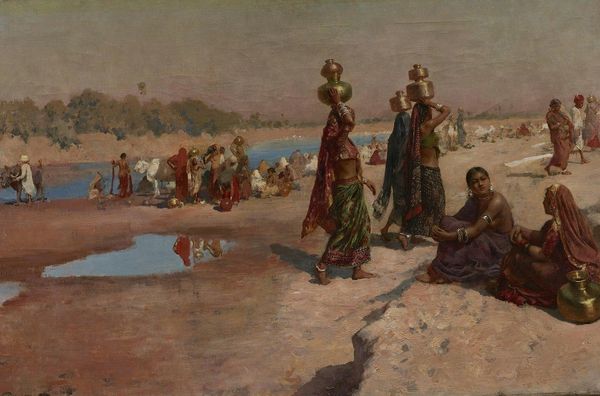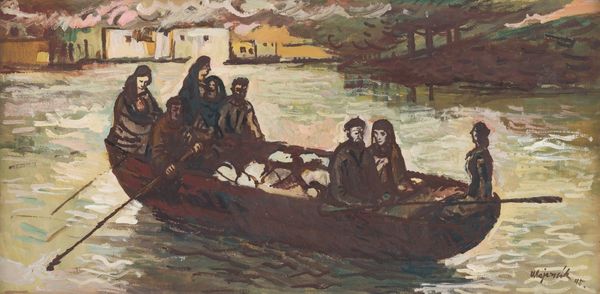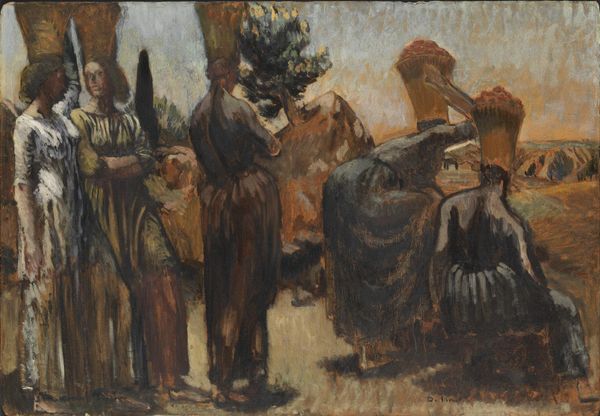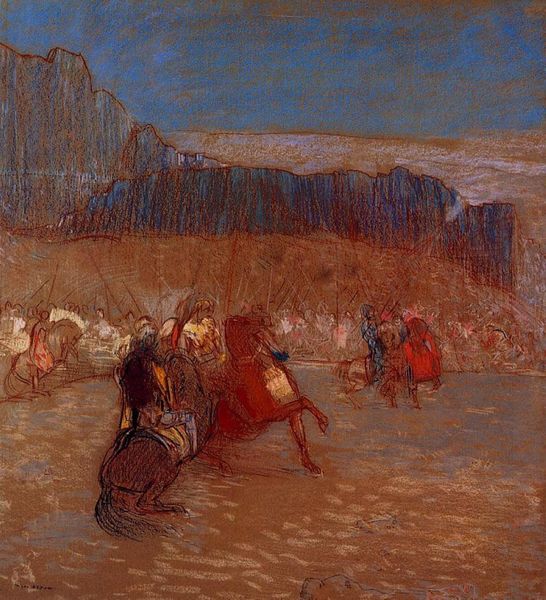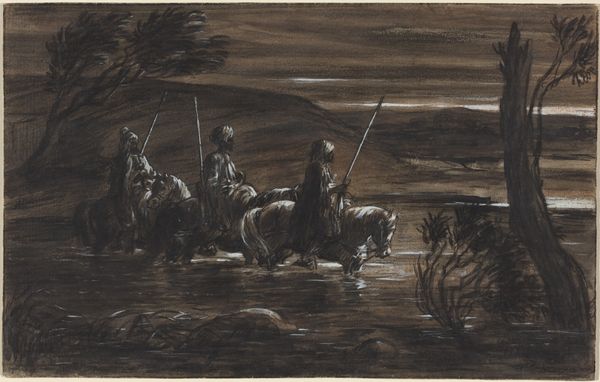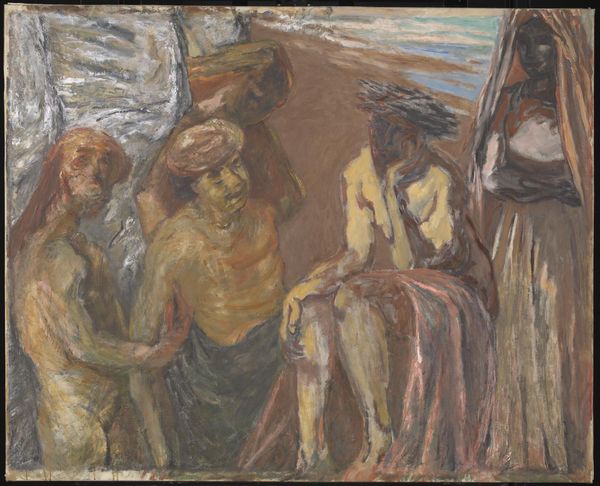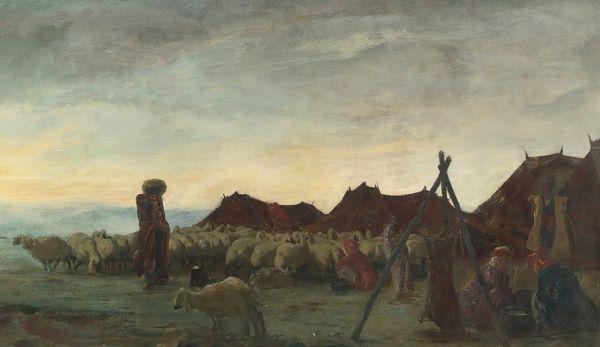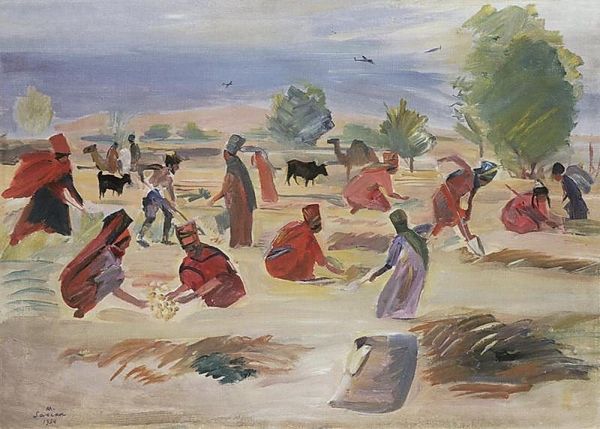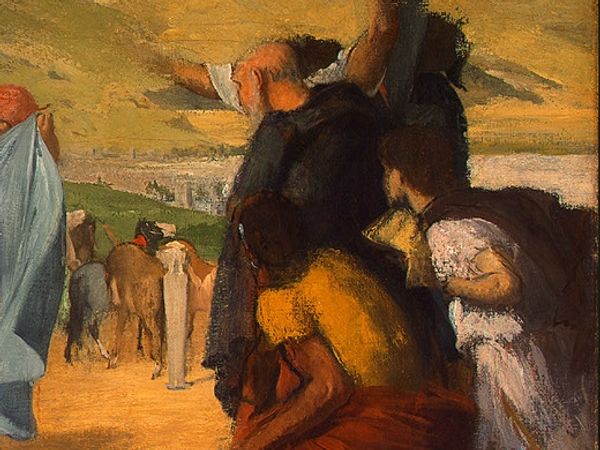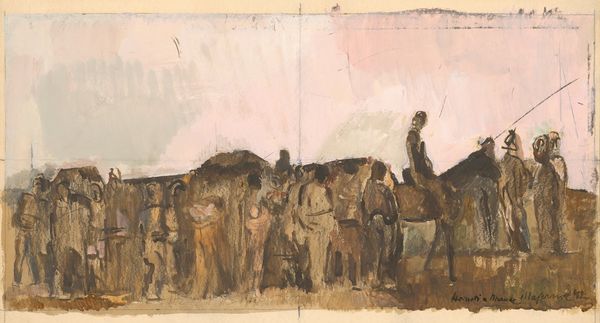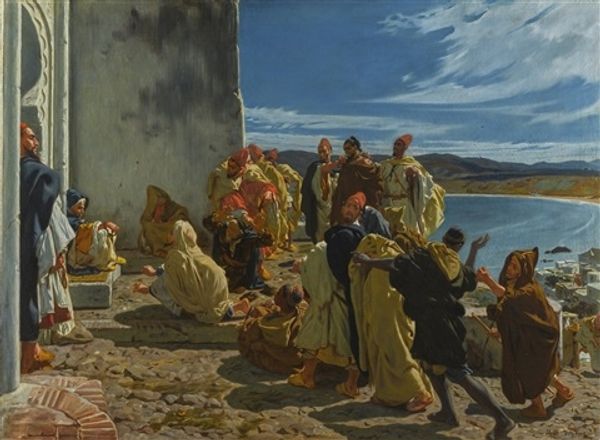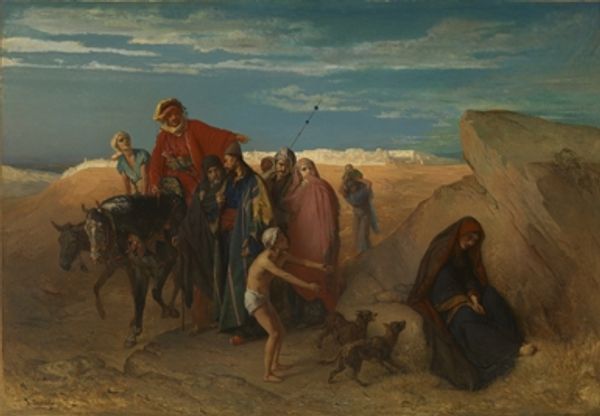
painting, watercolor
#
figurative
#
painting
#
landscape
#
figuration
#
social-realism
#
oil painting
#
watercolor
#
genre-painting
#
watercolor
Copyright: Public Domain: Artvee
Curator: This is Cyprián Majerník's "Bez domova," created in 1942. The title translates to "Homeless." Painted using watercolor, it portrays a group of people gathered by a river. What strikes you initially? Editor: There’s a somber quality to it, almost a heavy resignation in the figures’ postures. The muted colors reinforce that feeling – lots of browns and grays. It feels bleak, isolating. Curator: It’s a powerful reflection of its time. Consider the historical backdrop: 1942, deep within World War II. Majerník, though Slovakian, was living in exile in France at the time, deeply affected by the war and the displacement it caused. His own experience of displacement gives us insight. Editor: Absolutely, and you can really see that echoed in the work. They aren't just standing by a river; they are displaced persons huddling together, caught between flight and perhaps tentative resettlement. There's an almost timeless quality to the rendering of poverty and forced migration; that could easily speak to our current anxieties as well. The bare landscape—the lack of a visible settlement in the distance—intensifies that feeling of uncertainty. Curator: His choices absolutely emphasize themes of loss and alienation. Beyond the external context of wartime displacement, consider also how the group, primarily women and children, are marginalized and further subjected to the conditions brought on by conflict. The composition seems deliberately arranged to invoke empathy with people whose agency is limited by events outside their control. The maternal figure in the right, cradling a child and draped in shadows, evokes deep, internalized sadness. Editor: It makes me think about whose stories are most often excluded in official accounts of the period. It encourages the viewer to contemplate who suffered, and continues to suffer disproportionately, when larger political movements lead to population displacement. This goes far beyond any sentimental interpretation. It is actively highlighting power dynamics. Curator: Precisely. Majerník's personal pain informs the way he highlights collective trauma and resistance to oppressive circumstances in a simple, yet stark visual language. Editor: Thank you. That has provided new ways to interpret this piece. It goes beyond surface bleakness to something far more complex. Curator: I agree. Exploring these narratives embedded within works like Majerník's reveals their continued relevance today, a reflection on our responsibility in current and future geopolitical tensions and ecological degradation.
Comments
No comments
Be the first to comment and join the conversation on the ultimate creative platform.
